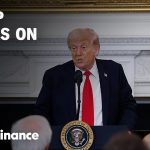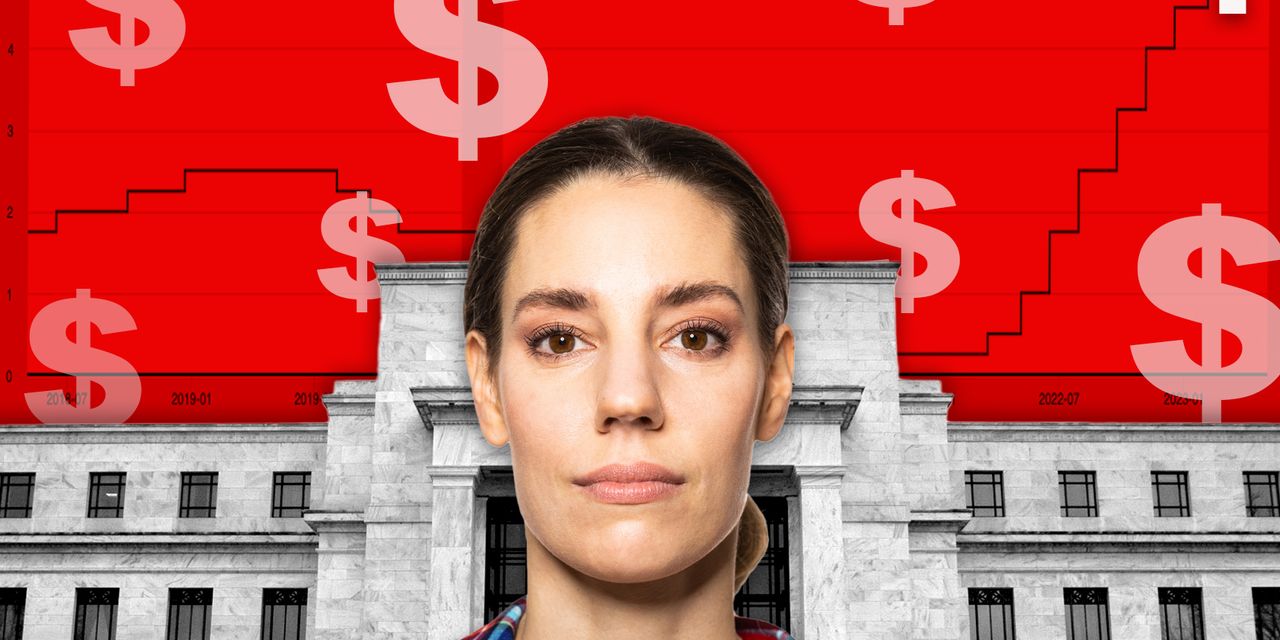The Federal Reserve’s interest-rate increases have been propping open a window for people to get tempting yields in turbulent times from savings accounts, certificates of deposit and other low-risk cash investments.
On Wednesday, the Fed again increased its benchmark rate. The 25-basis-point increase is the central bank’s tenth straight rate hike since March 2022, but this increase, which brings the rate to a range of 5%-5.25%, could be the last, some Fed watchers say.
The Dow Jones Industrial Average
DJIA,
Nasdaq Composite Index
COMP,
and S&P 500
SPX,
were all trading slightly lower on Thursday morning after the Fed’s decision.
So if yields on low-risk cash investments are at their highest point for now, there’s likely only one direction they’ll go next, observers say.
“In our view, we are now at the peak or very near the peak in the federal-funds rate. If you look at the market signals, they indicate exactly that,” said Angelo Kourkafas, investment strategist at Edward Jones.
What that means for rate-sensitive cash investments — like bank accounts, CDs, money-market funds and short-term Treasury debt maturing within one year — “is an opportunity to take advantage of these high yields that are not going to last forever,” he said.
The largest money-market funds were offering an average 4.64% seven-day yield as of Monday, according to Crane Data. Meanwhile, the yields on Treasury bills are also ranging around 4% to 5%, according to data.
The annual percentage yields on high-yield savings accounts and one-year online-bank CDs can now reach 4% and 5%, according to DepostAccounts.com.
But some of the longest-maturity CDs “may have already peaked,” according to Ken Tumin, the site’s founder and a senior industry analyst at LendingTree.
Long-term CD rates are less influenced by moves in the federal-funds rate and “are the first ones to react,” he said. The APY on a five-year CD averaged 3.95% in April, down from 4.04% in January, he noted.
Rate retreats are already showing elsewhere. I-bonds, the fixed-income investments pegged to inflation that caught wide attention recently, now offer a 4.3% rate. That’s down from 6.89% in the previous six months and well off their recent peak of 9.62%.
Even as inflation rates declined from scorching to warm, Americans had amassed $1 trillion in personal savings as of March. But recession worries continue to build among many economists and consumers.
“It’s not imminent that we see lower [Federal Reserve] rates down the road, but we could potentially by the end of the year,” said Kourkafas. “From an investor standpoint, locking in some of these high yields makes sense,” he later added.
“This could be ‘last call’ for savers,” said Greg McBride, Bankrate chief financial analyst. “CD yields on maturities of one year and longer have peaked, and now is the time to lock in. A slowing economy coupled with the Fed moving to the sidelines mean CD yields will start pulling back soon.”
Are we at the top?
It’s tough to say for sure whether the Fed has reached the top of this particular interest-rate cycle, but it was a key question at Wednesday’s Fed meeting. Another question is when the central bank will start considering rate decreases.
With its latest rate increase Wednesday, the central bank said that looking ahead, it will weigh a range of factors to decide the extent that “additional policy firming may be appropriate.”
There’s been no decision on a pause, Federal Reserve Chair Jerome Powell told reporters Wednesday. But the central bank had a tone shift in its latest statement, discarding a line that said “some” extra increases “may” be necessary.
It was “a meaningful change that we’re no longer saying we anticipate. So we’ll be driven by incoming data meeting by meeting, and we’ll approach that question at the June meeting,” Powell said.
For around a year, “retail investors — as they do in every tightening cycle — they’ve been gradually moving their deposits into higher-yielding places, such as CDs and other things, including money-market funds,” Powell noted.
“That’s a gradual process that is quite natural and happens during a tightening cycle,” he said.
If the Fed keeps its rate higher for longer, the window for higher yields will likely stay at its peak for a while, said Tumin. “Deposit rates might not fall quickly, so people might have time to take advantage of higher deposit rates.”
Federal Deposit Insurance Corp. data showed banks paying $78.7 billion in interest on domestic deposit accounts last year, according to DepositAccounts.com research. That’s more than triple the $24.3 billion that banks paid for deposit interest in 2021.
“If things turn for the worse,” Tumin said, “deposit rates could fall quickly, before the first Fed rate cut.” If banks tamp down their personal- and business-lending portfolios, they wouldn’t need to entice as many depositors with higher rates, he explained.
Economists say credit is already tightening as banks mull their next move after the failures of Silicon Valley Bank and Signature Bank last month. This week, JPMorgan Chase & Co.
JPM,
acquired First Republic Bank after the troubled lender closed its doors.
Ever since the Fed started tightening, consumers have become “increasingly rate-conscious,” said Jennifer White, senior director of banking and payments intelligence at JD Power.
“What goes along with rate chasing is all the other behavior that consumers learned during this process,” she said. That includes a heightened focus on the customer services a bank offers, and the costs it charges for those services, she said.
If and when interest rates decline, “I don’t think that’s going to be lost on customers,” White said.
Don’t get carried away
“With cash rates where they are right now, you can get meaningful yield,” said Mike Loewengart, head of model portfolio construction at Morgan Stanley’s
MS,
Global Investment Office. “It can make sense to hold a larger portion of cash and cashlike investments.”
Just how much cash you decide to hold onto depends on your own risk tolerance and the amount of time before you need to tap your portfolio, he said. Just don’t go overboard, he said.
There are many convenient tradeoffs, like the lock-up period for money in a CD or the fact that returns on cash ultimately cannot outrun inflation. “If you’re holding excess cash in your portfolio, you run the risk of not maintaining purchasing power over time,” Loewengart added.
Suppose an investor pulled all their money from stocks and bonds and put it all into Treasury bills that matured in three months’ time?
That cash-focused investor would have a 74% chance of underperforming a 60/40 portfolio, according to Vanguard’s number crunch on four decades of data. The person’s returns would be around 4% lower, researchers said.
(A 60/40 portfolio is a classic investment mix made up of 60% stocks and 40% bonds — though its effectiveness is a source of debate.)
If the investor stayed in three-month Treasury bills for a year, Vanguard’s analysts said, they would have an 87% chance of underperforming a 60/40 portfolio. Here, the T-bill investor underperformed the 60/40 portfolio by an average 13.5% underperformance, Vanguard said.
Joe Davis, Vanguard’s chief global economist, said he does not expect a rate cut this year.
Vanguard sees inflation cooling, but it also predicts a recession in the second half of the year that entails less bank lending, more job losses and more bankruptcy cases, he said.
Financial advisers always emphasize the importance of keeping the long view and avoiding knee-jerk investment decisions that attempt to time the market.
Markets and investors have experienced “the most aggressive Fed rate-hiking campaign” in decades, said Kourkafas. “It’s a big milestone, but now we have to think about what’s next.”
It’s been “painful for everything — except cash — last year,” Kourkafas said. “But now, as we make that turning point, there’s an opportunity with cash, but also investors shouldn’t forgo other parts of their portfolio.”
Read the full article here












